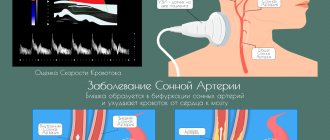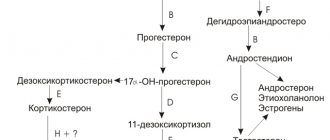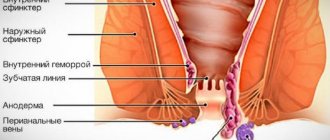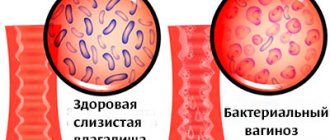Functions of selenium in the body - one of the main microelements
The content of the article
Selenium (Se) is one of the trace elements that performs a number of important functions in the human body.
Physiologically active Se is part of proteins: selenoprotein in the form of Se-cysteine, a derivative of the simplest amino acid, and cysteine, in which it replaces sulfur in the thiol group (-SH). It is a component of two essential amino acids, selenomethionine and selenocysteine, involved in the construction of certain enzyme proteins, and a component of many key enzymes necessary for life.
As part of enzymes that catalyze redox reactions, selenium performs a number of functions:
- protects cells from the harmful effects of free radicals, having antioxidant activity;
- participates in the reduction of ascorbic acid from oxidized metabolites, in the processes of DNA synthesis and apoptosis (programmed cell death);
- By separating iodine, it plays an important role in the metabolism of thyroid hormones.
Selenoproteins promote the development and regeneration of muscle tissue.
Selenium in the body has a positive effect on the functioning of the immune system, affecting the activity and differentiation of macrophages and the proliferation of lymphocytes. By scavenging reactive oxygen species, inhibiting cancer cell division, and targeting carcinogenic compounds, selenium may reduce the risk of cancer. By forming inactive complexes with heavy metals such as cadmium, lead, mercury, arsenic and thallium, it neutralizes their toxic effects.
Selenium protects nerve cells and heart muscle cells from oxidative stress. It plays a positive role in sperm production and has a beneficial effect on the condition of hair and nails. Selenium may be useful in the treatment of some neoplastic and neurodegenerative diseases, and through controlled supplementation or diet, it may become an important element in the prevention of neoplastic diseases.
Selenium standards for adults and children
The rate of selenium intake depends on age.
Table 1. Selenium consumption standards depending on age
| Age, condition | Selenium norm |
| Children | ranges from 20 to 55 mcg/day |
| Adults | 55 mcg/day |
| During pregnancy and breastfeeding | recommended daily dose - 60-70 mcg |
Selenium deficiency, its symptoms
Selenium deficiency in the body increases the risk of developing cancer and cardiovascular diseases, weakens the immune system, negatively affects spermatogenesis, and can lead to infertility and mental disorders. Insufficient selenium levels are often associated with diseases of the thyroid gland, liver and skin.
Symptoms of selenium deficiency:
- chronic fatigue;
- tendency to frequent colds;
- decreased vision;
- skin rashes;
- muscle pain;
- high cholesterol in the blood;
- indigestion.
Prolonged selenium starvation leads to the development of serious diseases such as heart attack, diabetes, sclerosis, arthritis, and cardiac ischemia.
Keshan disease (congestive cardiomyopathy) and Kashin-Beck disease (articular cartilage degeneration) are typical examples of diseases caused by selenium deficiency. They are found in China because there is a very low concentration of selenium in the soil and food there.
Thyroid and selenium
A review by Danish and British colleagues published at the end of January beautifully summarized everything we currently know about the role of selenium deficiency in the development of thyroid diseases and the prospects for the use of selenium in the treatment and prevention of these diseases.
So, a summary of the review (the review is large and interesting, get ready):
1. There are 25 genes in the human genome that encode selenoproteins
(proteins containing selenium). Selenoproteins have a wide range of functions, from antioxidant and anti-inflammatory to a role in the production of the active form of thyroid hormone, triiodothyronine (T3).
2. Congenital mutations
(for example, polymorphism of the
SECISBP2
), in which the synthesis of certain selenoproteins is impaired. This may manifest as increased serum total and free thyroxine (total and free T4), low total and free T3, and high reverse T3.
Addition from me
:
The condition can have various clinical manifestations, including: growth retardation in childhood with a lag in bone age, azoospermia, neck muscle dystrophy, increased skin sensitivity to UV, increased fat mass, and hearing loss. It is inherited in an autosomal recessive manner, found in people of various ethnic groups and is an underdiagnosed condition [1].
In this study, people with this mutation were prescribed levothyroxine at an initial dose of 2 mcg/per 1 kg of body weight/day with a dose titration of 25 mcg per 2 weeks under TSH monitoring (until a level of 2.0 μIU/ml was reached). I repeat: yes, we give levothyroxine for elevated T4 levels.
In general, as I understand from searching the literature, the situation is so underdiagnosed and poorly described that there are no uniform recommendations for treatment and data on the long-term results of any treatment.
3. Sources of selenium in the diet
humans are: cereals and grains, seafood, algae and meat from animals that were given food enriched with selenium. The record holders for selenium content are Brazil nuts (be careful with them, you can overdo it and get intoxicated - selenosis).
4. However, selenium consumption varies significantly in different countries (from deficiency in Iran to toxic levels of consumption in Venezuela and China) due to differences in selenium content in the soil. In many European countries, people do not reach recommended selenium intake levels of 55-70 mcg/day
.
There is a belt of selenium deficiency that runs from the northeast to the southwest of China (yep, in China alone - from deficiency to selenosis). People living in the deficiency belt often develop Keshan disease
- endemic dilated cardiomyopathy associated with selenium deficiency.
Based on physiological premises (the role of oxidative stress in the pathogenesis of autoimmune thyroiditis (AIT) and Graves' disease (GD); high concentration of selenoproteins in the thyroid gland; antioxidant properties of selenoproteins), it was assumed
that the use of selenium may be relevant as a therapy for both conditions.
In vitro and animal models
There have even been positive results in reducing oxidative stress and autoimmune inflammation with selenium supplementation.
Here's what we got in clinical trials:
:
1. Selenium deficiency appears to have to be significant for selenium supplementation to have a significant effect on thyroid function.
2. Selenium status, along with iodine status, can affect the size and nodules in the thyroid gland
. But at the same time, the effect of selenium status on thyroid size is more pronounced in individuals with adequate iodine status than in those who have iodine deficiency, which will then be the main significant factor.
3. People with selenium deficiency have an increased risk of developing AIT
compared to those with adequate selenium status.
reduces
the concentration of antibodies to thyroid peroxidase (
AT-TPO
more significantly than placebo .
However, this does not (!) affect
the remission/progression of the disease, the reduction in the dose of levothyroxine, the volume and echogenicity of the thyroid gland, the course of pregnancy for the woman and the fetus, or the improvement in the quality of life.
4. 50% of pregnant women who have a high titer of AT-TPO or antibodies to thyroglobulin (AT-TG) may develop postpartum thyroiditis
, and in 20–40% this condition progresses to primary hypothyroidism.
In a randomized placebo-controlled trial of 151 women with selenium deficiency, postpartum thyroiditis and permanent hypothyroidism developed statistically significantly less often in the group receiving 200 mcg of selenium/day (as selenomethionine) than in the placebo group.
Moreover, in another study, when selenium was given to pregnant women with high titers of AT-TPO and AT-TG, their antibody titer significantly decreased, but this did not (!) affect
on the volume and echogenicity of the thyroid gland, the course of pregnancy for the woman and the fetus, or improving the quality of life.
And also in more than one study we do not have long-term results (what happened when selenium intake stopped, did they develop hypothyroidism after 3-5-10 years, etc.).
5. Observational studies have shown higher serum selenium concentrations in patients who achieved remission of Graves' disease
than in patients who had a relapse of the disease, as well as lower selenium concentrations in patients with newly diagnosed HD than in the control group. Data have also accumulated on the correlation between a lower concentration of selenium in the blood and a greater risk of developing endocrine orbitopathy (controversial), and a higher incidence of hyperthyroidism (not only GD). Some studies have shown that when taking selenium, euthyroidism occurs faster when taking thyrostatics (and some have shown that there is no such effect). In general, more research is needed.
Currently, there are no uniform clinical recommendations for the use of selenium in people with thyroid diseases.
.
According to surveys of practicing European endocrinologists (Europe is a region of potential selenium deficiency), if they prescribe selenium, it is mainly to patients with AIT and HD with orbitopathy (for 6 months). But this is all very inaccurate.
How to assess a person's selenium status?
Measuring selenium concentration in plasma or serum
blood levels reflect selenium intake over the past few days. But: in the case of an inflammatory reaction (can be determined by an increase in C-reactive protein), the result will be underestimated.
A relatively rarely used measurement of selenium concentration in whole blood
allows you to assess selenium status over a longer period (up to 120 days).
Neutron activation analysis of selenium content in toenails
is a marker of selenium status over the past 12 months.
Optimal average selenium concentration:
- in plasma - 125 µg/l
- in toenails - 0.74 mcg/g
Why do we need to evaluate selenium status and ensure it is optimal?
We are stepping on shaky ground.
There is evidence of a deficiency
selenium with an increased risk of developing:
- Keshan's disease;
- autoimmune thyroiditis;
- of death;
- prostate cancer;
- cognitive impairment;
- decreased immune function;
- decreased fertility;
excess connections
Selena with:
- alopecia, dermatitis, selenosis (exactly)
- and increased risk of development: death (11.3% (95% CI, 0.0–22.6%)
- prostate cancer (HR 1.62, 95% CI 0.95–2.77)
- skin cancer (HR 1.25, 95% CI 1.03–1.51)
- type 2 diabetes mellitus (one meta-analysis OR 2.17, 95% CI 1.60–2.93 and another OR 2.03, 95% CI 1.51–2.72).
Please do not evaluate selenium status as a screening measure.
(!)
Who would it probably make sense to prescribe such an analysis in routine clinical practice?
:
- a person who has an increase in TSH and T4 with a decrease in T3 (lack of selenium to convert T4 to T3). All.
If the analysis is done and we see:
- deficiency - increase consumption of selenium-containing products or prescribe a dietary supplement with selenium (it is better to give preference to those containing selenite or sodium selenate
rather than selenomethionine, which is more likely to accumulate in toxic doses); - optimal concentration or excess - do not take any selenium supplements (!)
Causes of selenium deficiency
The level of selenium in food depends greatly on its content in the environment: soil and water. In areas where the soil is poor in selenium, deficiency is more common in people. The classic example is China. But the selenium content in the soil in Poland and other European countries is also low, so the amount of selenium in the diet may not be enough.
Selenium deficiency can also be caused by an improperly balanced, heterogeneous and unhealthy menu. Malnutrition, bowel disease, kidney or liver failure, and cancer can all contribute to selenium deficiency in the body.
Recommendations
Starting at age 20, serum selenium levels must be determined every 10 years.
If the selenium concentration is less than 108 mcg/l, additional intake of medications containing selenium is necessary (for example, 50-100 mcg per day). Selenium is sometimes contained in multivitamin complexes (usually 20-25 mcg), which is not always enough.
6 months after starting to take selenium, it is necessary to re-test the concentration of selenium in the blood to adjust the dose of the drug taken. The selenium concentration in the blood should not be lower than 108 mcg/l.
The level of selenium in the blood decreases with age, so after 50 years of age, a study of the concentration of selenium in the blood must be carried out every 5 years.
In the laboratories of the CITILAB Association, the study of selenium in blood serum is carried out using the method of atomic absorption spectrometry. Reference values: 108-200 µg/l.
Excess selenium - symptoms of selenosis
Excessive consumption of selenium is harmful to the body. Prolonged intake of too much of it leads to selenosis.
Excess of the mineral leads to brittleness, discoloration and loss of nails and increases hair loss. Sure signs of selenium overdose:
- pain in the charters;
- fatigue;
- nervousness and irritability;
- gastrointestinal disorders (nausea, vomiting, diarrhea);
- excessive sweating;
- skin changes;
- garlic breath.
Accidental single ingestion of a large dose of selenium is toxic and can lead to cirrhosis, pulmonary edema and death. Perhaps an excess of the mineral in the body is also indirectly associated with the development of type II diabetes. In addition, elevated selenium levels can cause oxidative stress in cells and increase the risk of cancer.
Research results
Perhaps the most successful cancer prevention study ever conducted was published on December 25, 1996 (Clark LC).
It took ten years and was carried out with the support of the National Institute for Cancer Research (USA). 1,312 volunteers took part in the experiments (75 percent of them were men). During this time, the subjects were given selenium daily. Those who took selenium experienced a 63% reduction in mortality from prostate cancer; by 56% from cancer of the gastrointestinal tract and by 46% from lung cancer. A study (Duffield-Lillico AJ et al., 2003) showed that in individuals receiving additional selenium, the risk of developing prostate cancer was almost 2 times lower. Patients with blood selenium levels less than 108 μg/L had an almost 4-fold higher risk of developing prostate cancer in subsequent years.
Sources of Selenium - Important Prerequisites for Taking Selenium Supplements
- Large amounts of selenium are found in meat and offal, fish and crustaceans, grains and dairy products, chocolate and fruits.
- Garlic, onions, dry legume seeds, broccoli, white cabbage and asparagus are rich in this mineral.
- Nuts and mushrooms are also good sources of selenium.
Selenium is best absorbed together with protein and vitamins A, C, E. The absorption of the element increases with its deficiency in the body. High levels of sulfur and heavy metals in food reduce its absorption.
You can compensate for selenium deficiency in the body by eating foods rich in this element or using medications from the pharmacy. In case of excess, it is recommended to include foods with reduced selenium content in the menu and stop taking supplements.
We must not forget that adding any elements or vitamins cannot replace a healthy and balanced diet and should not be done without consulting a doctor. In some cases, selenium supplementation may be required in appropriate doses. However, before you start taking it, you should check the level of selenium in the blood, because its excess leads to side effects, and the difference between a therapeutic and a toxic dose is small.
About selenium and its importance for women
Selenium - elements of the periodic table
Taking into account all the unfavorable factors that certainly affect a woman’s body, one cannot fail to note the importance of maintaining the correct balance of vitamins, minerals and trace elements in her body.
Many will be surprised, but even a slight deficiency of one of the substances can cause the development of serious pathologies.
Selenium is no exception in this regard, so all women should maintain its intake into the body with food at the proper level.
What is this substance? First of all, selenium is an element of the well-known periodic table. In the code of chemical compounds it has the 34th serial number and is characterized as a non-metal.
Selenium is contained in all things around us, albeit in extremely small quantities. For example, there are only 500 milligrams of this element per ton of earth.


![Selenium [converted]-04-1.jpg](https://laram-halal.ru/wp-content/uploads/selen-preobrazovannyj-04-1-jpg-330x140.jpg)







